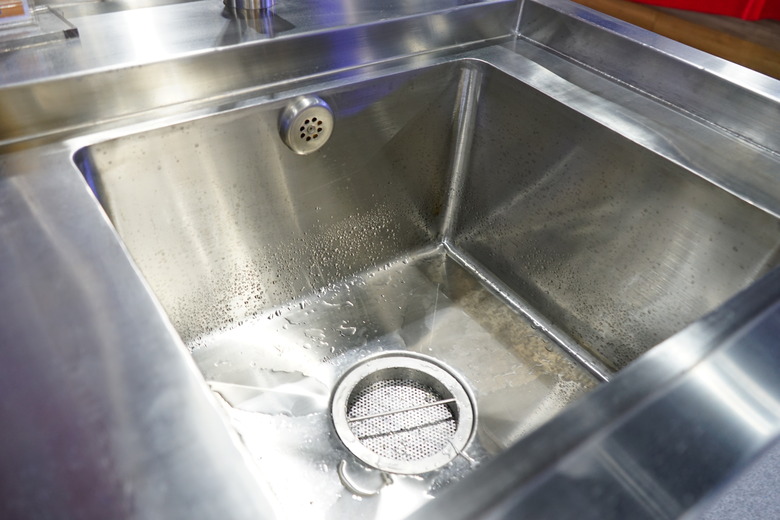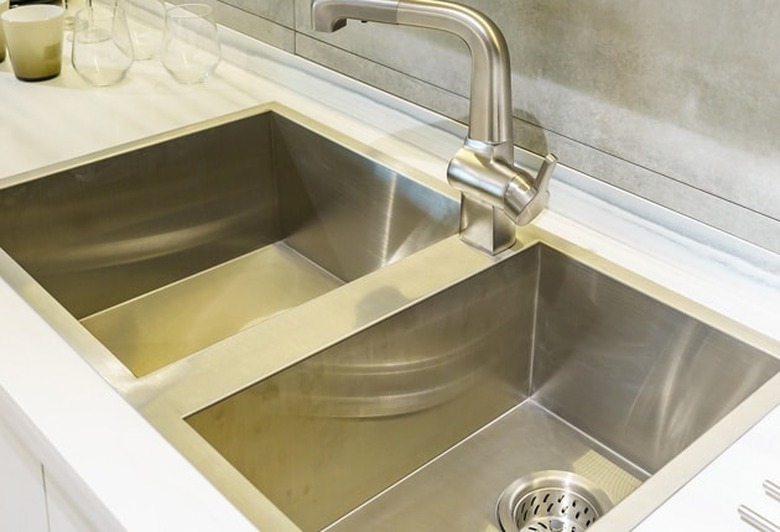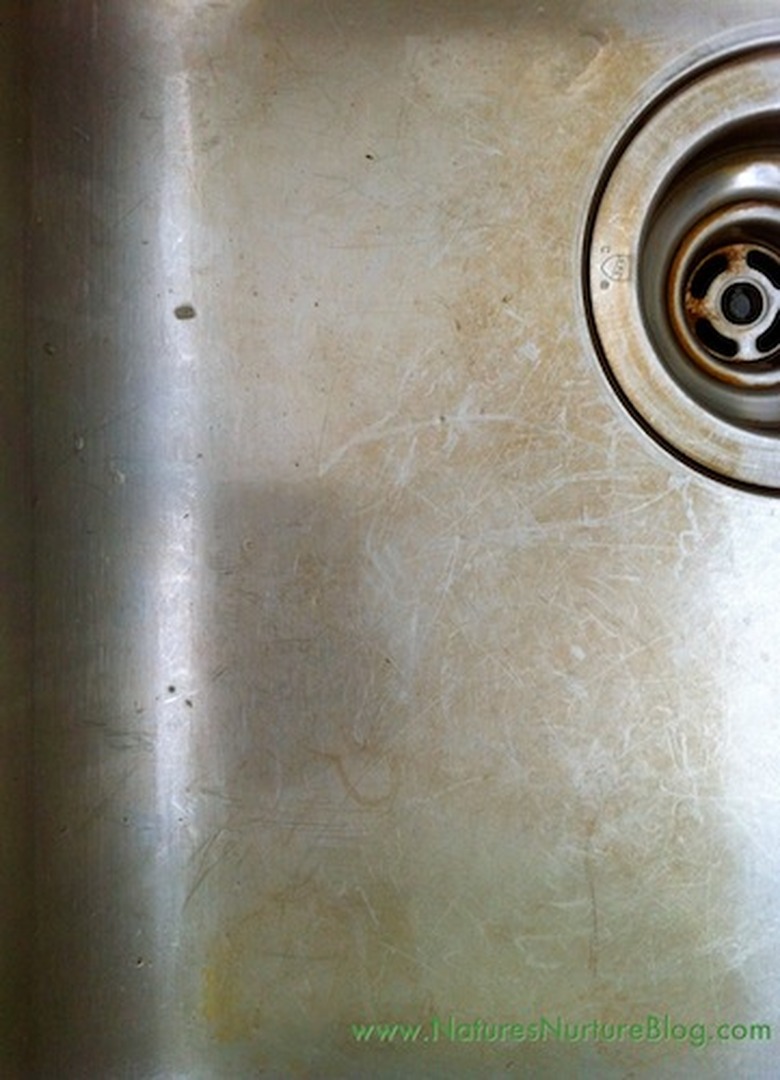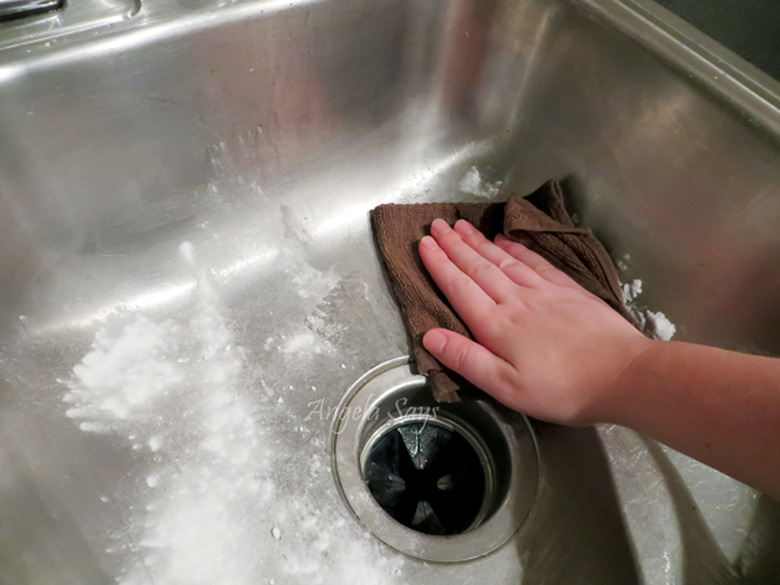How To Remove Chemical Stains From A Stainless Steel Sink
We may receive a commission on purchases made from links.
You might well think that a material known as "stainless"is utterly immune to staining of all types, but this is simply not the case with so-called stainless steel. While this material is certainly less susceptible to rust discoloration than ordinary steel, stainless steel definitely does stain.
What allows stainless steel to keep its shine longer than other types of steel is a protective layer of chromium oxide on its surface. In fact, chromium oxide is a type of rust, but unlike iron oxide—the form of rust with which most people are familiar—the chromium oxide layer generally doesn't flake off and expose more of the underlying metal to corrosion. This protective layer makes it easy remove most stains from stainless steel, provided you don't use the wrong cleaning agent or implement.
What Is Stainless Steel?
What Is Stainless Steel?
Ordinary steel is an metal alloy. Its primary component is iron, and it also contains up to 2 percent carbon along with trace amounts of other elements, such as silicon, phosphorous, sulfur and oxygen. To create stainless steel, manufacturers include chromium in the alloy, and a fair amount of it, too—from 10 to 30 percent. They usually also add other elements, such as nickel and manganese, for increased durability and workability. The combination usually renders stainless steel non-magnetic.
Chromium is a super-hard metal that combines with oxygen to form chromium oxide. This compound forms a thin, continuous layer on the surface of stainless steel that prevents further corrosion and also prevents ferric oxide (iron rust) from forming. This layer is self-healing and will re-form if you scratch the metal.
Types of Stains and Corrosion
Types of Stains and Corrosion
The sleek, shiny finish of a stainless steel sink can turn cloudy or become discolored for a number of reasons. You can get rid of most of these stains, but some are permanent.
- Hard water: Minerals in hard water can collect on any sink. Calcium deposits will turn it cloudy, and dissolved iron is responsible for the unsightly brownish rust stains you find on many old bathroom and kitchen fixtures.
- Chlorine and chlorides: Chlorine causes a type of corrosion known as pitting. This is also true for chlorides, and common table salt (sodium chloride) is a chloride. Short periods of exposure aren't problematic, but prolonged exposure, such as allowing salty water or water that contains chlorine bleach to stand in a stainless steel sink, can cause this type of staining, which is irreversible.
- Bimetallic corrosion: Leaving salty water standing in your sink creates another stain and corrosion hazard. The salty water is an electrolyte, which means it conducts electricity, and if any implement made with a dissimilar metal, such as aluminum, is also sitting in the sink, the exchange of electrons between the metals could corrode the sink.
- Acid staining: Any liquid with a pH less than 1.0 can stain stainless steel. A liquid with such a low pH is an acid that is too strong for common use, but certain sulfuric acid-based drain cleaners may qualify. Avoid putting them in the sink.
- Iron staining: Wiping your stainless steel sink with steel wool will scratch it, but that isn't the biggest problem. Fine pieces of iron left on the surface of the stainless steel can reduce the chromium concentration, and when it falls below 10 percent, the sink will rust. You can remove this rust and the iron that caused it, and when you do, the chromium oxide layer will repair itself and prevent more rust from forming.
A General Stain Removal Procedure
A General Stain Removal Procedure
You should always check the manufacturer's cleaning recommendations for your sink. Most recommend this simple cleaning method for most stains:
- Mix baking soda with dish soap to make a paste.
- Soak a sponge or microfiber cloth in the paste to saturate it. You can also use an old toothbrush.
- Wipe the stains gently and repeatedly, always going with the metal's grain lines, until the stains are gone.
For general care, wash down the sink weekly with a sponge or rag and dish soap or another cleaning product. Soft abrasive cleansing powders, such as Comet or Bon Ami, are recommended. One sink distributor suggests putting the stopper in the sink, pouring in some club soda and using it to wipe down the metal for a sparkling, glossy finish.
Tip
Check the ingredients of any product you use. If the product contains chlorides, be meticulous about rinsing the sink after cleaning to avoid pitting.
Getting Rid of Calcium and Rust Stains
Getting Rid of Calcium and Rust Stains
Calcium and iron stains from hard water are difficult to remove from any sink. However, most will come off with vinegar, which is acidic enough to dissolve the stains but not acidic enough to harm the sink. A good way to use it is to spray vinegar on the sink after cleaning with the baking soda and dish soap paste, but before rinsing. It will make the baking soda fizz, which is fun to watch, and when you wipe off the paste and rinse after about 20 minutes, the stains should be gone.
It is a little more difficult to remove rust stains that are a result of scratching with steel wool or some other metallic, abrasive cleaning implement. The easiest solution is to wipe down with a cleanser that contains oxalic acid, such as Barkeeper's Friend. If you prefer a DIY method, make a paste with vinegar and laundry detergent, cover the stain and let the paste sit for an hour or two. Spray the paste with more vinegar if it dries out. When you wipe off the paste, the rust should be gone, but you'll still have to rinse and wipe down the sink thoroughly to get off all the tiny metal shards that caused the rust.
Tip
Besides avoiding steel wool and chlorine or chloride products, you should never use oven cleaner to clean your sink. It contains caustic soda, an ingredient in many industrial-strength drain cleaners, which is just as bad for the finish as a strong acid.
Avoid letting cast iron cooking implements soak in a stainless steel sink. Small bits of iron can migrate through the water and cause iron staining on the sink.



